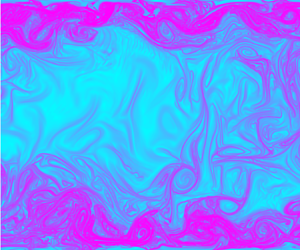Article contents
Objective barriers to the transport of dynamically active vector fields
Published online by Cambridge University Press: 27 October 2020
Abstract

We derive a theory for material surfaces that maximally inhibit the diffusive transport of a dynamically active vector field, such as the linear momentum, the angular momentum or the vorticity, in general fluid flows. These special material surfaces (Lagrangian active barriers) provide physics-based, observer-independent boundaries of dynamically active coherent structures. We find that Lagrangian active barriers evolve from invariant surfaces of an associated steady and incompressible barrier equation, whose right-hand side is the time-averaged pullback of the viscous stress terms in the evolution equation for the dynamically active vector field. Instantaneous limits of these barriers mark objective Eulerian active barriers to the short-term diffusive transport of the dynamically active vector field. We obtain that in unsteady Beltrami flows, Lagrangian and Eulerian active barriers coincide exactly with purely advective transport barriers bounding observed coherent structures. In more general flows, active barriers can be identified by applying Lagrangian coherent structure (LCS) diagnostics, such as the finite-time Lyapunov exponent and the polar rotation angle, to the appropriate active barrier equation. In comparison to their passive counterparts, these active LCS diagnostics require no significant fluid particle separation and hence provide substantially higher-resolved LCS and Eulerian coherent structure boundaries from temporally shorter velocity data sets. We illustrate these results and their physical interpretation on two-dimensional, homogeneous, isotropic turbulence and on a three-dimensional turbulent channel flow.
Information
- Type
- JFM Papers
- Information
- Copyright
- © The Author(s), 2020. Published by Cambridge University Press
References
REFERENCES
Haller et al. Supplementary Material
Computation of Eulerian active barriers to momentum transport from aFTLE for under increasing barrier time s in the turbulent channel flow example
Haller et al. Supplementary Material
Computation of Eulerian active barriers to vorticity transport from aFTLE for under increasing barrier time s in the turbulent channel flow example
- 19
- Cited by


